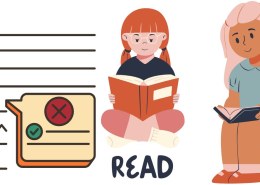In English grammar, participles are forms of verbs that can function as part of a verb phrase or as adjectives. The verb “be” is one of the most irregular and essential verbs in English, and its present participle and past participle forms play a crucial role in verb conjugation.
Present Participle of “Be”
The present participle of “be” is “being.”
Uses of “Being”:
- Progressive Forms:
- Used in continuous (progressive) tenses to describe ongoing actions.
- Example:
- Present Continuous: She is being helpful.
- Past Continuous: They were being noisy.
- As a Gerund:
- Functions as a noun in a sentence.
- Example: Being kind is important.
- In Passive Voice:
- Used to describe an ongoing state in passive constructions.
- Example: The house is being cleaned.
Past Participle of “Be”
The past participle of “be” is “been.”
Uses of “Been”:
- Perfect Tenses:
- Used to indicate actions or states completed at some point in time.
- Example:
- Present Perfect: I have been to Paris.
- Past Perfect: She had been happy before the news.
- Passive Voice:
- Indicates a state or action in passive constructions.
- Example: The work has been finished.
- Conditionals and Subjunctives:
- Used in hypothetical or conditional statements.
- Example: If I had been there, I would have helped.
Comparison: “Being” vs. “Been”
| Aspect | Being | Been |
|---|---|---|
| Form | Present participle | Past participle |
| Time Frame | Ongoing or progressive actions | Completed actions or states |
| Examples | She is being polite. | He has been there before.
|
The present participle of “be” is “being,” used for continuous actions or as a gerund, while the past participle is “been,” used in perfect tenses and passive voice to describe completed actions or states. Mastering these forms is essential for effective communication in English.

